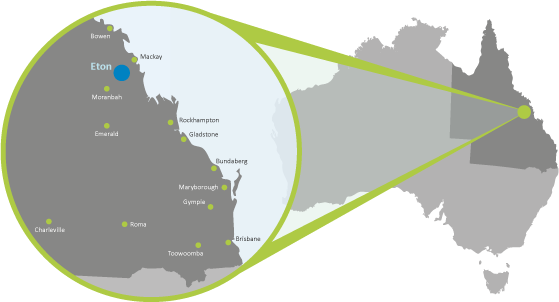Eton
Past review
15/05/2012
The Eton water supply scheme is located south west of Mackay, near the town of Eton.
The Kinchant Dam (capacity 62,800 ML) is the only infrastructure that provides storage for the scheme’s water. It pumps water from the Pioneer River and captures flows from Sandy Creek.
Three pump stations at Mirani Weir discharges water into the Mirani Diversion Channel, which runs for 8 km all the way into the Pioneer River. Nine submersible pumps in total operate at these pump stations (910 ML a day maximum capacity).
A channel system that stretches for 35 km, together with 130 km of pipelines, distribute and deliver the water to customers.
The water supplied by the Eton scheme is mainly used to irrigate the sugar cane in this sugar-growing area – more than 300 cane growers are customers of this scheme.

The QCA’s recommended irrigation prices to apply to the Eton bulk water supply scheme and Eton distibution system for the 2012-17 regulatory period were published in May 2012. They are described in the Executive summaries for the Eton supply scheme and Eton distribution scheme of our Final Report, which can be found below.
These recommendations were accepted by the Queensland Government, and the new price path came into effect on 1 July 2012.
This SunWater water scheme review forms part of the review that the QCA undertook in 2011–12 for the Queensland Government: the SunWater Irrigation Price Review 2012–17.
You can read more about the pricing review on our project home page. You can also view the submissions for the water schemes that we received, the consultants’ reports and issues arising from face-to-face consultation with stakeholders.
We recommended a new irrigation price path, to apply from July 2012 to June 2017 – with prices moving in a direction that better reflect costs. For the majority of schemes, our recommended prices result in increases to fixed prices and reductions in usage prices.
The irrigation revenue earned by SunWater in some schemes does not cover the cost of operating and maintaining irrigation assets. In these schemes, QCA could show the ‘cost-reflective’ price, but could only recommend prices that increased by up to $2/ML per year plus inflation.
The QCA’s recommended prices were accepted by the government.